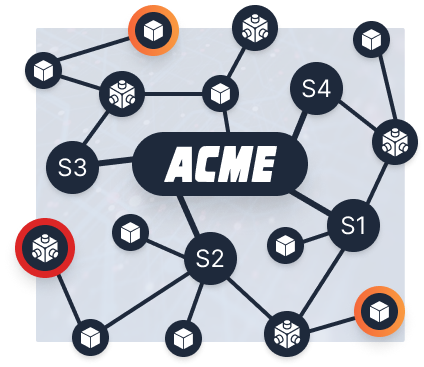Challenges
Substance Compliance
How do you comply and stay up-to-date with restricted and declarable substance lists as they emerge and change over time? Before the REACH Regulation, many OEMs asked their suppliers to sign a statement of compliance with regulated substances lists. These supplier statements, occasionally supported by sample testing, were sufficient in ensuring compliance with relevant regulatory requirements (e.g. the RoHS Directive). However, REACH changed all of this by introducing three significant differences compared to previous substances regulations:
- The Candidate List Substances of Very High Concern (SVHC) are not restricted but require declaration by suppliers if their supplied article contains > 0.1% w/w of any SVHC.
- OEMs are required to calculate the concentration of SVHCs in the finished product using data from suppliers on the part weight and SVHC concentration in the component parts.
- The number of SVHCs requiring declaration has gone up from 30 SVHCs in 2010 to over 200 SVHCs by 2020. ECHA continues to add new SVHCs to the list every 6 months.
It is therefore no longer possible for OEMs to ask suppliers to sign one statement for all supplied part numbers, as different parts from the same supplier may have different concentrations of SVHCs. Instead, OEMs need to gather declarations at the part number level every six months as the REACH Candidate List is updated. ECHA's guidance confirms that OEMs are required to contact their suppliers for this data:
ECHA's Guidance
“Whenever standard information from suppliers is not sufficient to check compliance with REACH, companies have to obtain the necessary information by pro-active requests in the supply chain.”
Additionally, OEMs are now burdened with many new and emerging declarable and restricted substance requirements which are constantly changing and being added to. A non-exhaustive list of current substance regulations can be found by expanding the following detail list:
Regulations for Restricted and Declarable Substances
- REACH Restrictions
- REACH Candidate List
- RoHS
- RoHS2 amendments
- POPs
- California Proposition 65
- EU MDR
- Battery Directive
- Packaging Directive
- PFAS
- TSCA
- Other industry lists
Complex Supply Chains
How do you gather data across complex supply chains and respond to substance compliance requests?
Sending and managing compliance data directly between suppliers and customers is expensive and inefficient. The diagram below highlights the level of supply chain communication that would be required if OEMs manually send their own substance compliance survey to their suppliers every six months. This individual approach leads to excessive costs and administration for suppliers and OEMs and does not scale as product and part portfolios grow.

Additionally, OEMs would need to resurvey their supply chains using this complex methodology each and every time a new substance becomes restricted or declarable, each time an exemption is removed or changed and each time they purchase new or updated parts from suppliers.
BOMcheck is a shared industry platform which provides supply chain management and standards-compliant communication tools, as well as training and guidance to help suppliers create and share high-quality regulatory compliance declarations with all their customers through one dashboard.
Central Compliance Platform
Skip forward to find out more about BOMcheck's Central Compliance Platform Solution or read on to find out about the new SCIP database requirements.
SCIP Requirements

SCIP is the database for information on Substances of Concern In articles as such or in complex objects (Products) established under the 2018 revision to the Waste Framework Directive. From 5 January 2021, all companies in Europe are obligated to submit information into the SCIP database for any products they supply which include articles that contain REACH Candidate List substances above 0.1%, with possible subsequent enforcement by Member State regulatory authorities. The reporting requirement applies to all companies in the supply chain including the original article supplier, suppliers of sub-assemblies and assemblies that contain affected articles, suppliers of finished products that contain affected articles, and resellers and distributors who supply the finished product to retailers.
Simplify SCIP Compliance
Find out how you can simplify and automate SCIP database submissions for your entire product and part range with BOMcheck's SCIP Solution.